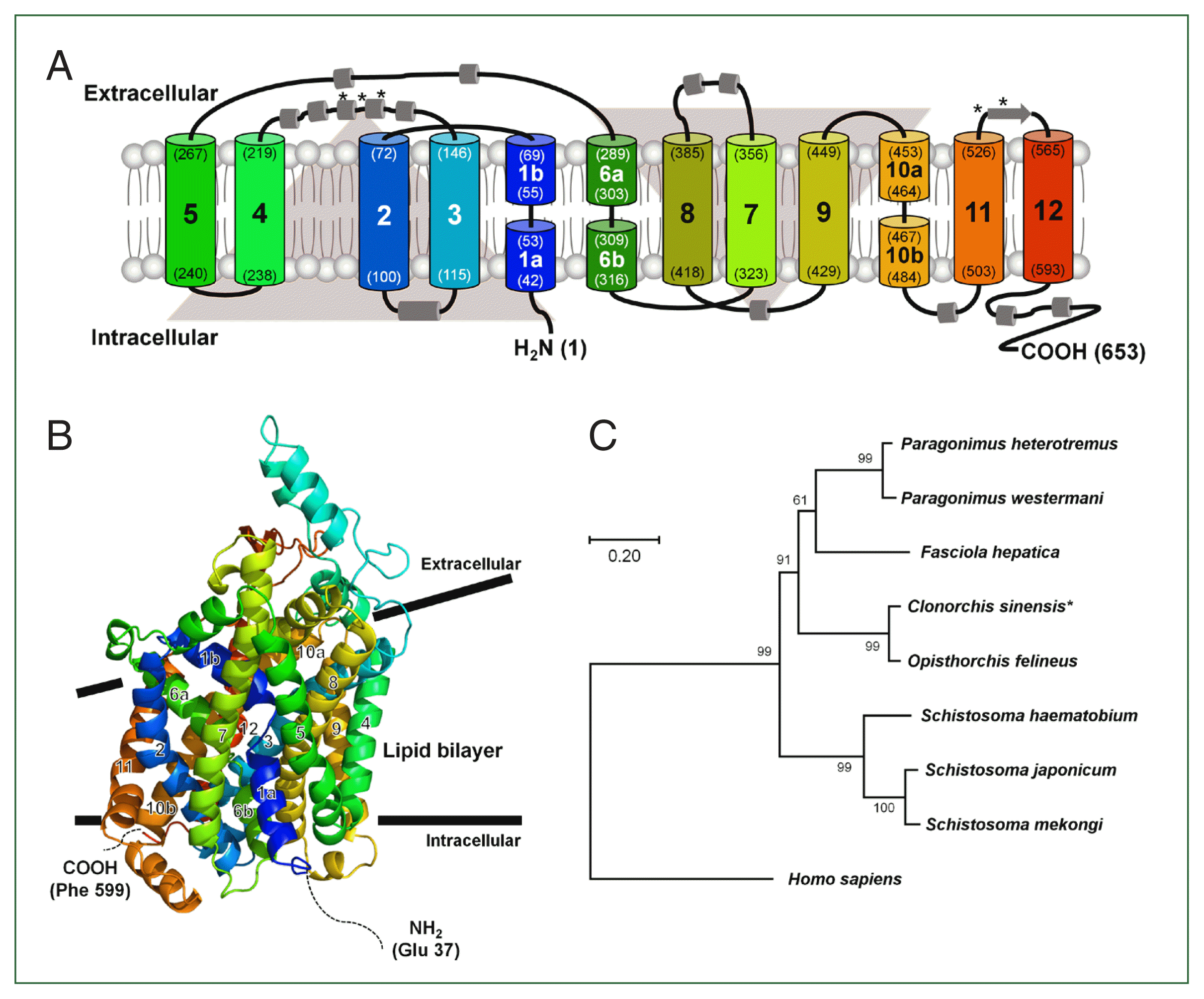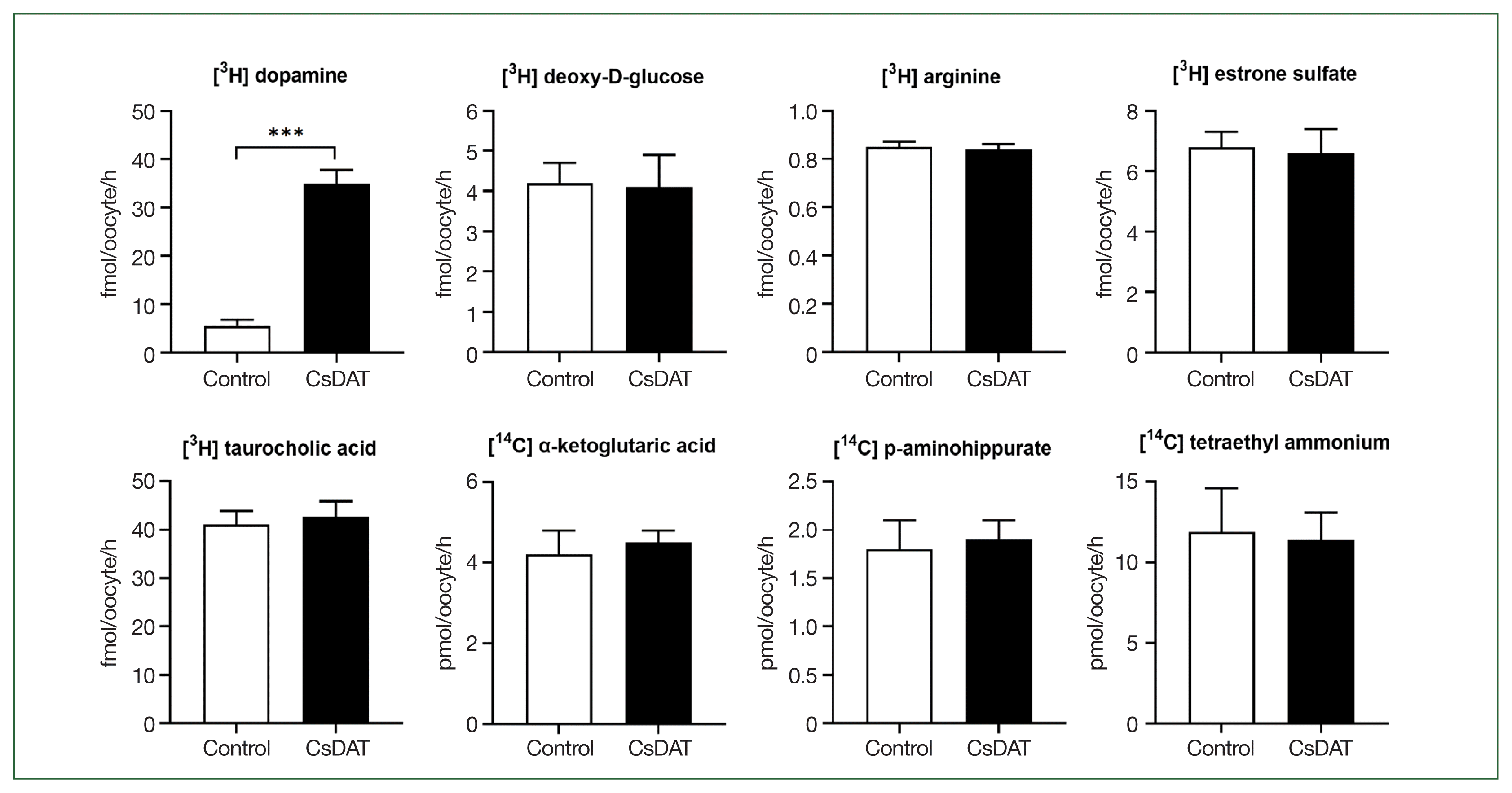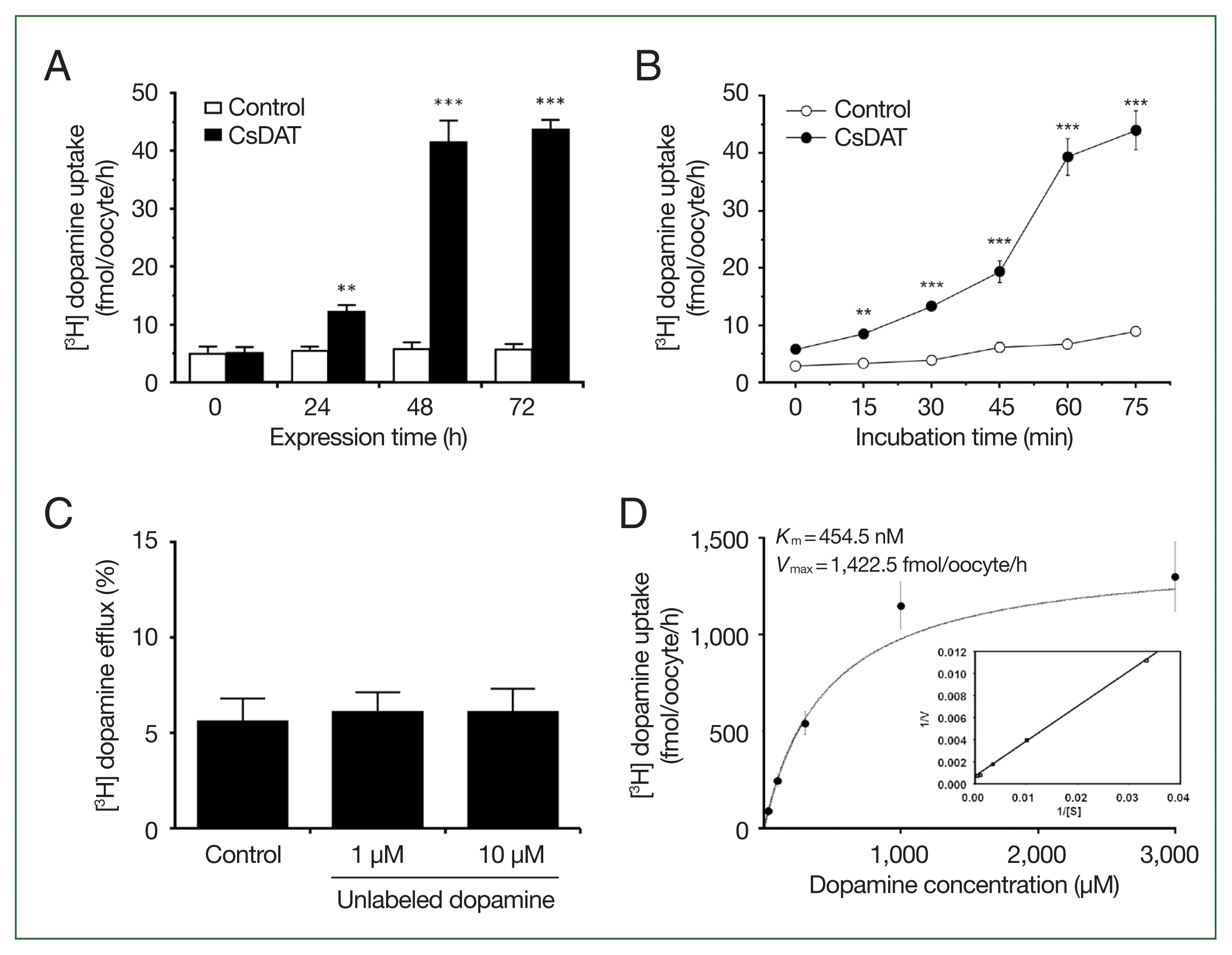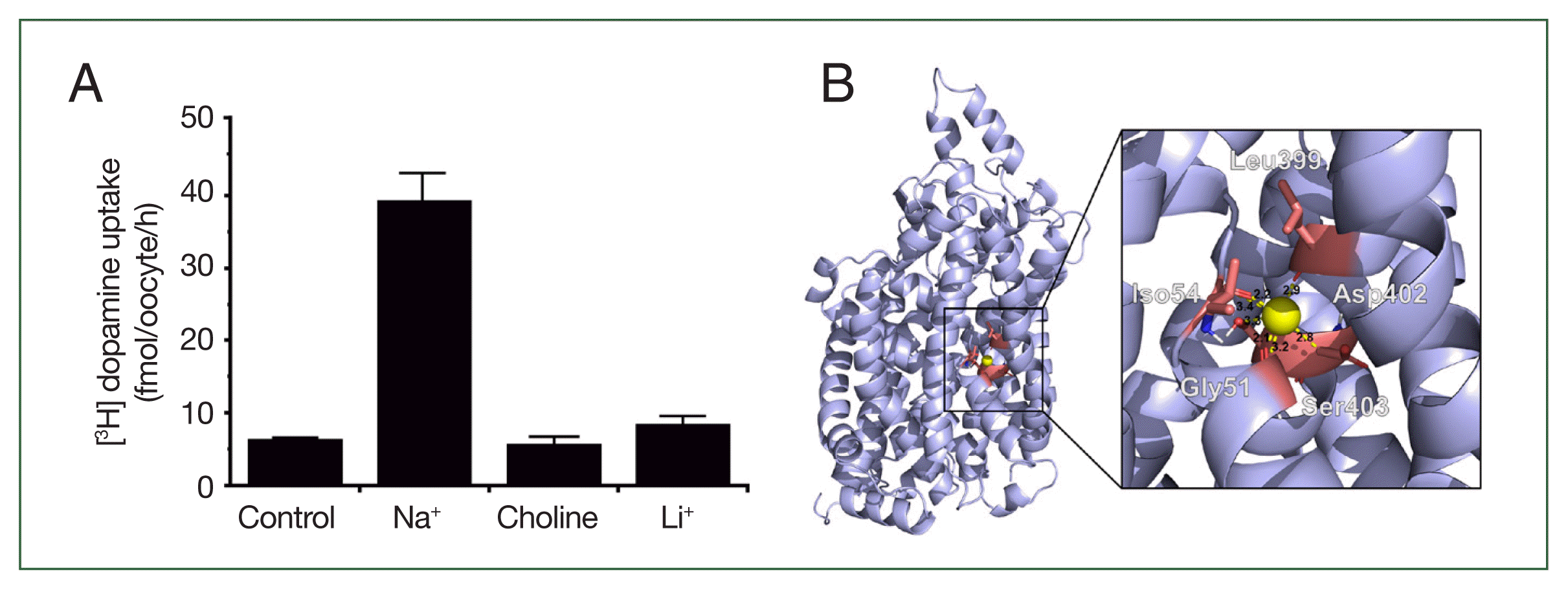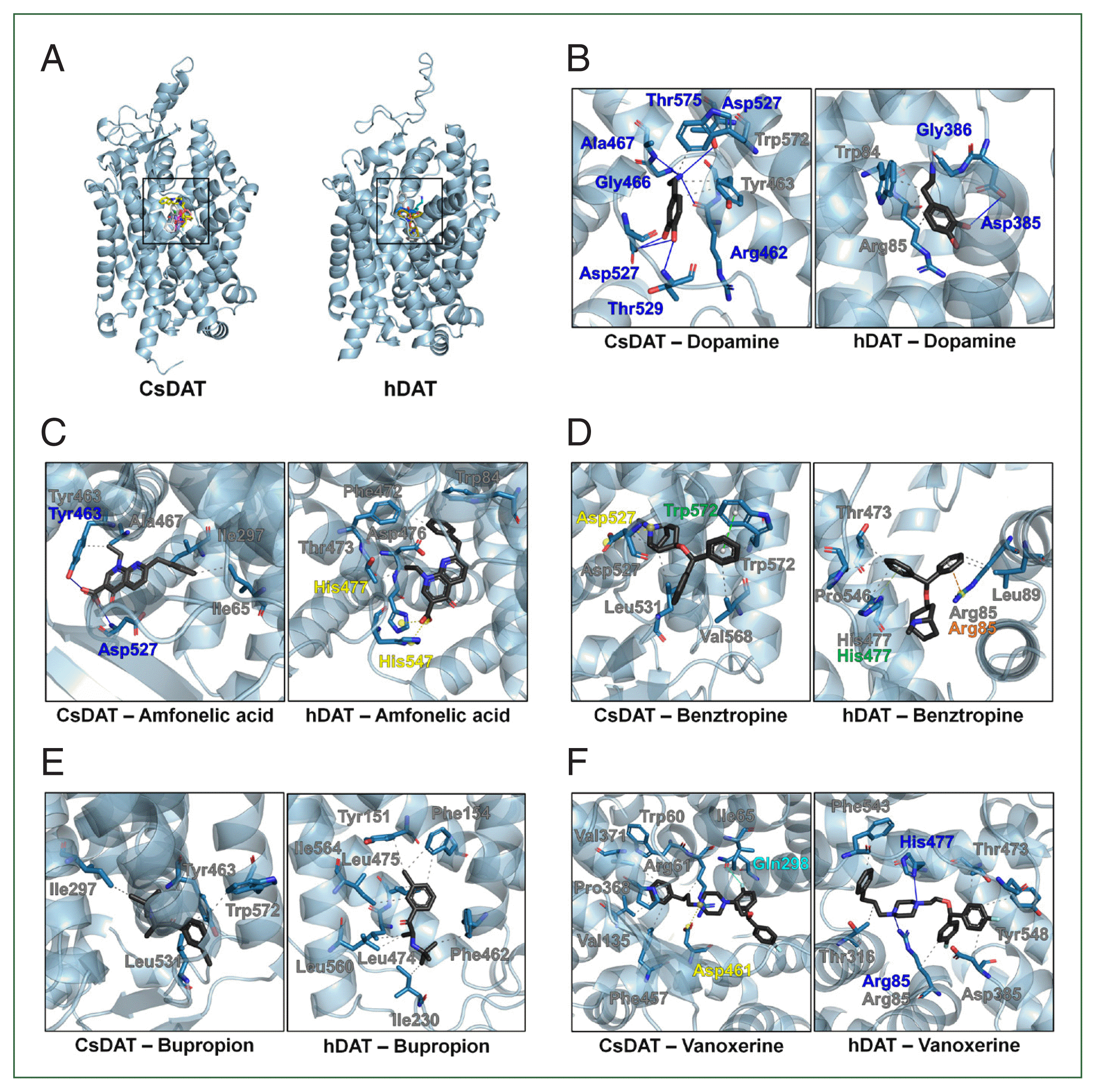2. Leksomboon R, Chaijaroonkhanarak W, Arunyanart C, Umka J, Jones MK, et al. Organization of the nervous system in
Opisthorchis viverrini investigated by histochemical and immunohistochemical study. Parasitol Int 2012;61(1):107-111
https://doi.org/10.1016/j.parint.2011.07.014


3. Pax RA, Bennett JL. Neurobiology of parasitic flatworms: how much “neuro” in the biology? J Parasitol 1992;78(2):194-205.


4. Terenina N, Kreshchenko N, Movsesyan S. Musculature and neurotransmitters of internal organs of trematodes (the digestive, reproductive and excretory systems). Zoology (Jena) 2022;150:125986
https://doi.org/10.1016/j.zool.2021.125986


7. Gianutsos G, Bennett JL. The regional distribution of dopamine and norepinephrine in
Schistosoma mansoni and
Fasciola hepatica. Comp Biochem Physiol C Comp Pharmacol 1977;58(2C):157-159
https://doi.org/10.1016/0306-4492(77)90097-1


8. El-Shehabi F, Taman A, Moali LS, El-Sakkary N, Ribeiro P. A novel G protein-coupled receptor of
Schistosoma mansoni (SmGPR-3) is activated by dopamine and is widely expressed in the nervous system. PLoS Negl Trop Dis 2012;6(2):e1523
https://doi.org/10.1371/journal.pntd.0001523



9. Pax RA, Siefker C, Bennett JL.
Schistosoma mansoni: differences in acetylcholine, dopamine, and serotonin control of circular and longitudinal parasite muscles. Exp Parasitol 1984;58(3):314-324
https://doi.org/10.1016/0014-4894(84)90048-1


13. Mura A, Jackson D, Manley MS, Young SJ, Groves PM. Aromatic L-amino acid decarboxylase immunoreactive cells in the rat striatum: a possible site for the conversion of exogenous L-DOPA to dopamine. Brain Res 1995;704(1):51-60
https://doi.org/10.1016/0006-8993(95)01104-8


14. Lohr KM, Masoud ST, Salahpour A, Miller GW. Membrane transporters as mediators of synaptic dopamine dynamics: implications for disease. Eur J Neurosci 2017;45(1):20-33
https://doi.org/10.1111/ejn.13357


18. Jun H, Mazigo E, Lee WJ, Park YK, Han JH, et al. Functional characterization of glucose transporter 4 involved in glucose uptake in
Clonorchis sinensis. Parasites Hosts Dis 2024;62(4):450-460
https://doi.org/10.3347/PHD.24051



21. Larsen MB, Fontana AC, Magalhães LG, Rodrigues V, Mortensen OV. A catecholamine transporter from the human parasite
Schistosoma mansoni with low affinity for psychostimulants. Mol Biochem Parasitol 2011;177(1):35-41
https://doi.org/10.1016/j.molbiopara.2011.01.006



23. Patocka N, Sharma N, Rashid M, Ribeiro P. Serotonin signaling in
Schistosoma mansoni: a serotonin-activated G protein-coupled receptor controls parasite movement. PLoS Pathog 2014;10(1):e1003878
https://doi.org/10.1371/journal.ppat.1003878



24. Terenina NB. The serotonin and dopamine content of helminths in different classes. Zh Evol Biokhim Fiziol 1989;25(5):566-571.

26. Torres GE, Gainetdinov RR, Caron MG. Plasma membrane monoamine transporters: structure, regulation and function. Nat Rev Neurosci 2003;4(1):13-25
https://doi.org/10.1038/nrn1008


27. Vermeire JJ, Humphries JE, Yoshino TP. Signal transduction in larval trematodes: putative systems associated with regulating larval motility and behaviour. Parasitology 2005;131(Suppl):S57-S70
https://doi.org/10.1017/S0031182005008358


29. Mortensen OV, Amara SG. Gain of function mutants reveal sites important for the interaction of the atypical inhibitors benztropine and bupropion with monoamine transporters. J Neurochem 2006;98(5):1531-1540
https://doi.org/10.1111/j.1471-4159.2006.04060.x


31. Meyer JH, Goulding VS, Wilson AA, Hussey D, Christensen BK, et al. Bupropion occupancy of the dopamine transporter is low during clinical treatment. Psychopharmacology (Berl) 2002;163(1):102-105
https://doi.org/10.1007/s00213-002-1166-3




